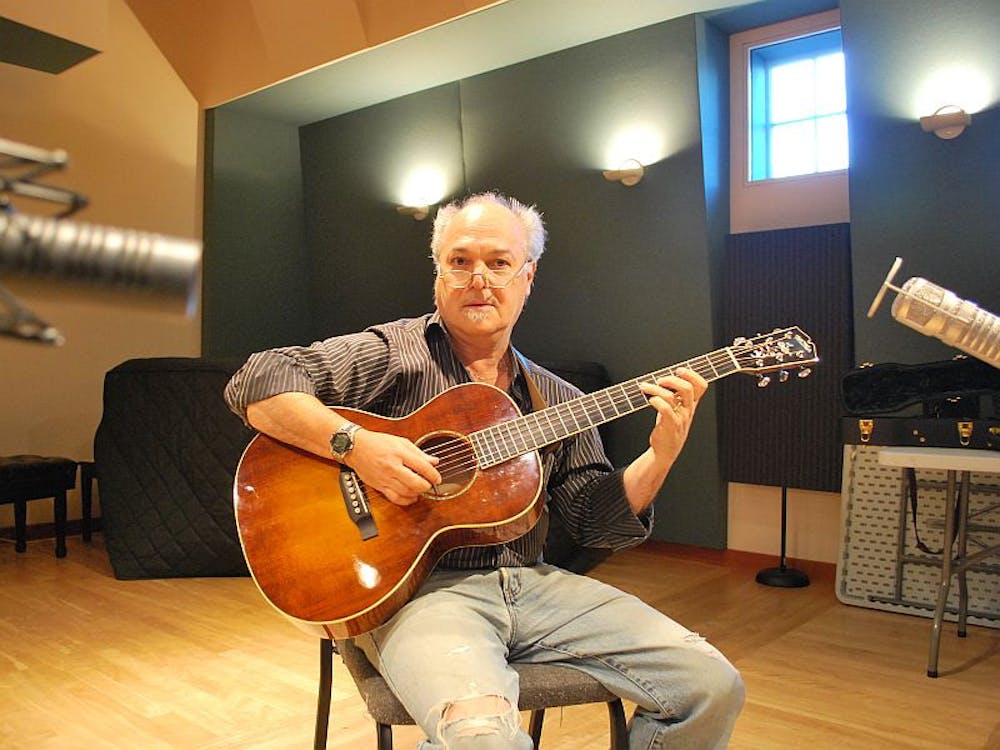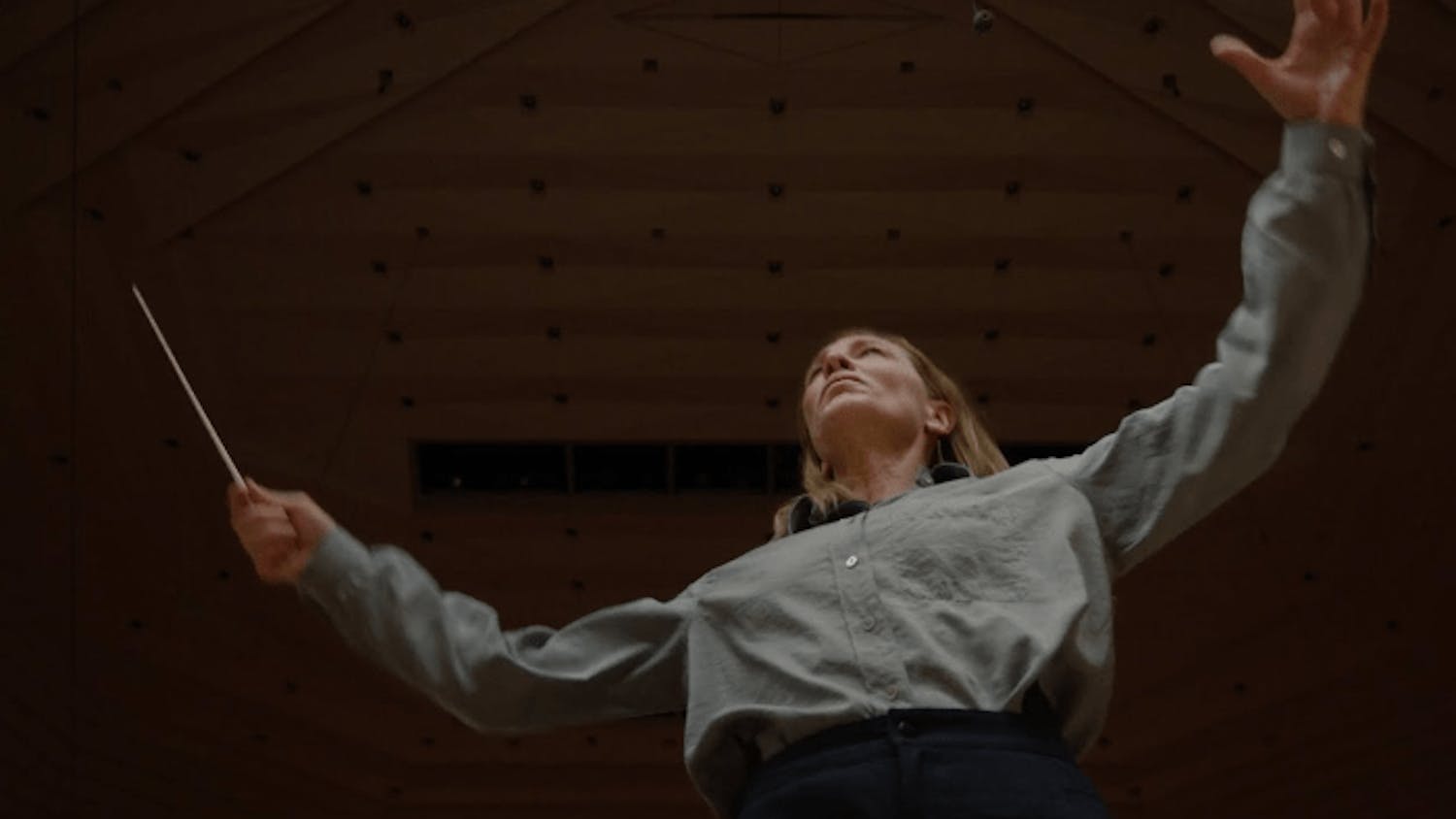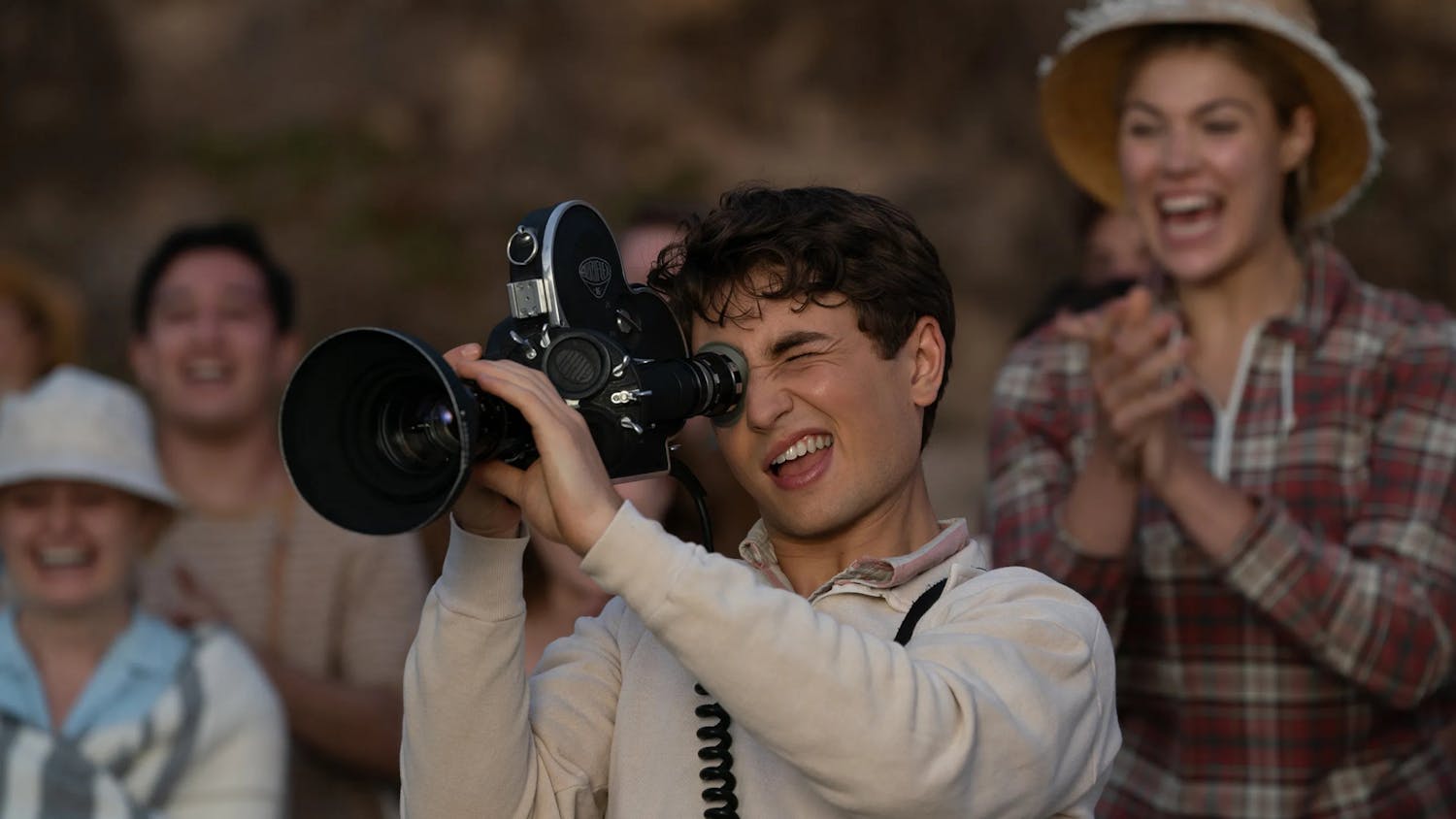Vintage Martin Flat-top. Jazz Archtop. National resonator. Flat-top with DeArmond sound-hole pickup. Solid-body Electric. These five pristine, glistening guitars stood still, entrancing the audience as the lights of the Robison Concert Hall in the Mahaney Arts Center slowly faded on March 3. Dozens of students, staff, faculty and community members sat silently as William Nash, professor of American studies and English, took center stage. Nash explained that this event, “An Evening with Paul Asbell,” served a myriad of purposes. Not only was it a performance for the greater Middlebury community, but it also served a specific academic purpose: This semester, Nash is teaching an American studies class entitled “The Guitar in American Culture” for the second time. While there are plenty of pertinent readings, pictures and recordings, this performance offered a chance to hear a live guitar performance.
For Mark Christensen, concert hall technical director, this multipurpose event was exciting to take part in.
“Sometimes an event is clearly for the performer, like a recital, and sometimes clearly for the audience, like a concert, so this event, being for a class, for Paul [Asbell] and for the crowd, is really cool,” Christensen said.
The next hour and a half was a five-phase lecture performance where Asbell expounded on the history of guitars in America. He started with the flat-top and songs from the early 1900s like Henry Thomas' “Fishin’ Blues.” He then discussed the archtop for Don Redman’s “Gee Baby Ain’t I Good to You,” before moving to Depression-era blues played on a National Trovador like Tampa Red's “You Can’t Get That Stuff No More.” The lecture concluded with Asbell on the electric guitar, showcasing the contemporary sound of Jimi Hendrix. Asbell even mixed in some of his own original work, inspired by the artists he has listened to and worked with over the years.
Throughout the performance, it was made clear that studying the guitar can be a powerful conduit to teach about the history of the United States. For instance, Asbell explained that the third guitar, the National resonator, came out in the 1920s right before the Great Depression. The unfortunate timing made the model unaffordable for the average American. The lack of access to certain guitars, such as the National resonator, and other instruments during this time in history both gave way to new genres of music, a result of many musicians resorting to less expensive instruments, and showcased the way that economic realities have shaped music history. Another example Nash offered on the same theme was how industrialization affected the history of music.
“Guitar making after the industrial revolution really changed as some companies began using machines and mass-producing guitars. So we have to ask, what was gained with uniformity of production and what was lost with less handcrafting?” Nash said.
Asbell made an interesting point toward the end of his performance that the esoteric guitar references and trivia will probably be appreciated by two or three “guitar nerds” in the crowd. Surveying the body language of the audience members over the course of the performance, there indeed emerged two standout figures: a father and son who consistently nodded to the guitar history references and sang along to the early 20th-century blues lyrics. Jared Ahern ’25 was the student in question, sitting next to his father Timmy Ahern — who had driven five hours from Brooklyn just to watch Asbell perform. For Jared, the concert was emotional in its own right, and he spoke to a universal feeling that guitar invokes.
“Blues is one of the most fundamental modes of human expression, and, yes, while it is rooted in sorrow, all other genres of music are derived from this raw emotion,” Jared Ahern said.
As the performance concluded, Asbell lingered to sell copies of his CDs and to answer more questions from guitar enthusiasts. Not only had Asbell’s music and life experience helped young artists like Jared Ahern, delighted the ears of many Middlebury residents, and inspired the academic work of Nash and his students, but it also serves as a reminder that the history of music and musical instruments can profoundly impact and inform the history of a nation.
As the event wrapped up and Asbell was packing away his guitars, I asked him a personal question about this history and whether he feels that the academic study of guitar sanitizes and flattens the magical, more transcendent qualities of music that perhaps cannot be studied. In essence, I wanted to hear from Asbell if he thought music should be listened to or studied.
“I don’t see it as being either/or,” he said. “Academia shouldn’t be soulless, and the fact that it is is someone’s fault. If it turns everything dull, it is not serving what should be its main purpose: to inspire.”




